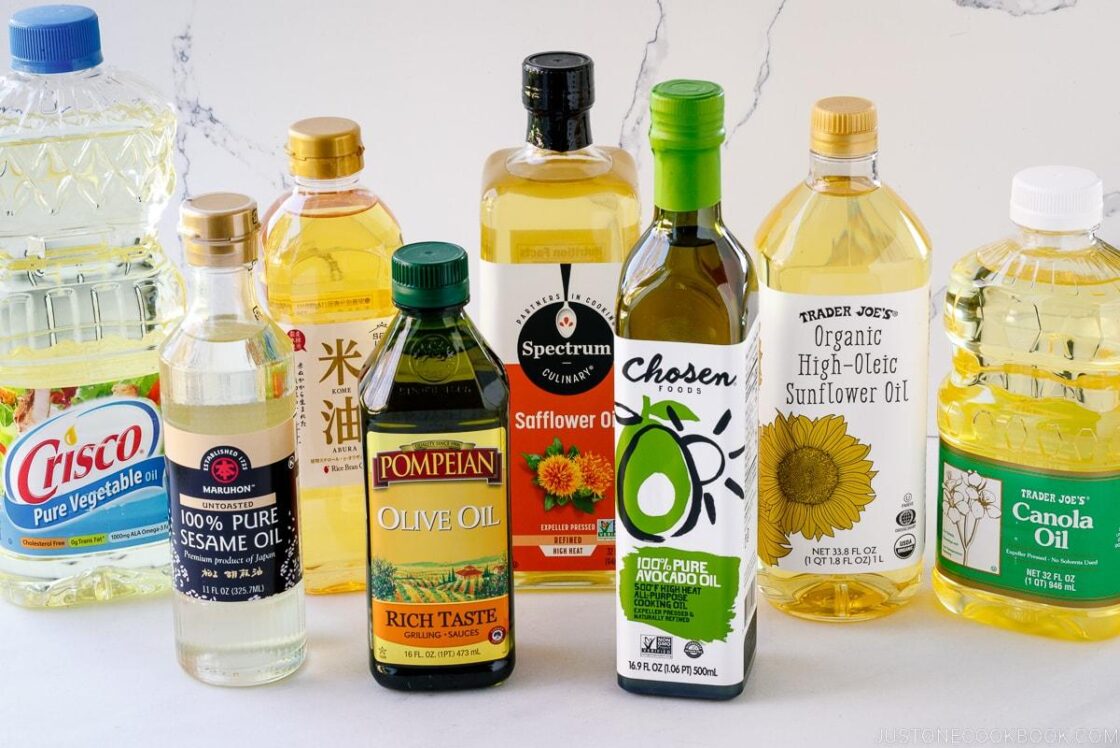Are you curious about the wide array of cooking oils available and their unique characteristics? From olive oil to coconut oil and everything in between, understanding the differences between cooking oils can elevate your dishes to the next level. Join us on a fascinating exploration as we dive into the world of oils, uncovering the best uses and flavors for each type. Get ready to expand your culinary knowledge and enhance your cooking skills!
1. Unveiling the World of Cooking Oils: Popular Types and Their Health Benefits
Are you often puzzled by the vast array of cooking oils available in the market? Let’s embark on an intriguing journey to unravel the mysteries behind popular types of cooking oils and their associated health benefits. From the rich flavor of olive oil to the versatility of coconut oil, each type offers a unique profile of nutrients and culinary uses. Understanding the nuances of these oils can not only elevate your cooking skills but also contribute to your overall well-being.
Delve deeper into the world of cooking oils by mastering the art of decoding labels. Navigate through the nutritional contents and make informed choices based on your dietary requirements. By unraveling the information on labels, you can enhance your cooking experience while prioritizing your health goals. Stay tuned for more insightful tips and tricks on selecting the best cooking oils for your culinary creations. Let’s embark on this captivating exploration together and unlock the secrets of cooking oils.
2. Tips to Decode Labels: Understanding the Nutritional Contents of Cooking Oils
Deciphering the complex world of cooking oils can be a daunting task, but it doesn’t have to be! By understanding how to read labels, you can unlock valuable information about the nutritional content of different oils. Look for key indicators such as saturated fat, unsaturated fat, and omega-3 fatty acids to make informed choices for your health.
When examining labels, pay close attention to the smoke point of each oil. This temperature at which an oil begins to break down and produce harmful compounds can affect its suitability for different cooking methods. High smoke point oils, such as avocado and grapeseed oil, are ideal for frying and searing, while low smoke point oils, like flaxseed oil, are better suited for salad dressings and finishing touches.
With these tips, you can navigate the aisles of cooking oils with confidence, selecting the best options for your culinary adventures. Understanding the nuances of labels will empower you to make healthier choices and elevate your cooking game to new heights.
3. How Temperatures Impact Oils: The Science Behind Smoke Points
When it comes to cooking oils, temperature plays a crucial role in determining their effectiveness in the kitchen. The science behind smoke points is fascinating and essential for achieving the perfect dish every time. Smoke points refer to the temperature at which an oil begins to smoke and break down, releasing harmful free radicals and losing its nutritional properties. It is crucial to choose oils with high smoke points for high-heat cooking methods like frying and searing to avoid compromising the quality of your food.
Understanding how different oils react to heat can elevate your cooking skills to the next level. Oils like avocado oil, ghee, and refined coconut oil have high smoke points and are ideal for frying and sautéing, while oils like flaxseed and walnut oil are best reserved for low-heat recipes to preserve their delicate flavors. By mastering the art of selecting the right oil for the right cooking technique, you can optimize the taste and health benefits of your dishes effortlessly.
4. The Art of Selection: Best Cooking Oils for Different Types of Cuisine
Dive into the fascinating world of cooking oils and discover the art of selection when it comes to choosing the best ones for different types of cuisine. Each oil brings its unique flavors and properties to the table, elevating dishes to new heights of taste and texture. Whether you’re sautéing, frying, or dressing a salad, the right oil can make all the difference in your culinary creations.
Asian Cuisine: When it comes to cooking Asian dishes, sesame oil is a must-have. Its nutty aroma and delicate flavor add depth to stir-fries and noodle dishes. Pair it with soy sauce and ginger for an authentic taste that will transport you to the streets of Beijing.
Mediterranean Cuisine: Olive oil is the star of Mediterranean cooking, renowned for its rich, fruity taste and high levels of heart-healthy monounsaturated fats. Use it in marinades, dressings, and for drizzling over grilled vegetables for a taste of the sun-soaked shores of Greece.
Latin American Cuisine: For a touch of Latin flair, reach for avocado oil. Its mild flavor and high smoke point make it ideal for frying plantains, grilling meats, and making creamy guacamole. Embrace the vibrant flavors of Mexico and beyond with this versatile oil at your fingertips.
5. Smarter Choices for Dietary Restrictions: Special Oils for Vegan and Keto Diets
Are you curious about exploring the fascinating world of cooking oils? In this section, we’ll delve into the realm of special oils that cater to specific dietary restrictions, particularly for those following vegan and keto diets. Choosing the right oil can make a significant difference in your culinary creations, ensuring not only flavor but also nutritional value.
For vegan diets, oils like avocado oil, coconut oil, and olive oil are excellent choices. These oils offer a rich flavor profile and a range of health benefits, making them versatile options for various cooking techniques. On the other hand, those following a keto diet may benefit from oils like MCT oil, ghee, and almond oil, which are high in healthy fats and low in carbohydrates.
By understanding the unique properties of different oils, you can make smarter choices that align with your dietary preferences and goals. Whether you’re looking to enhance your plant-based dishes or optimize your keto-friendly meals, selecting the right oils can elevate your culinary experiences. Let’s embark on this exploration together and unlock the secrets of special oils for vegan and keto diets!
Concluding Remarks
the world of cooking oils is vast and varied, with each type bringing its own unique flavor, health benefits, and cooking properties to the table. By understanding the differences between oils and how to use them effectively, you can elevate your culinary creations and embark on a fascinating exploration of flavors and textures. So next time you’re in the kitchen, don’t be afraid to experiment with different cooking oils and see how they can transform your dishes!
References/Sources:
- “The Ultimate Guide to Cooking Oils” by America’s Test Kitchen
- “Cooking Oils and Smoke Points” by the Cleveland Clinic
- “The Complete Idiot’s Guide to Healthy Cooking Oils” by Leslie Bilderback

